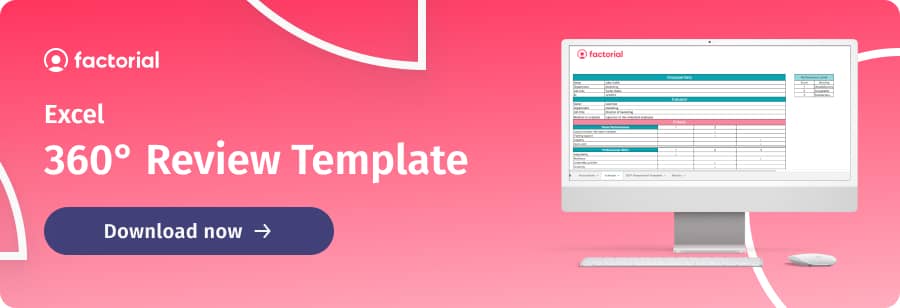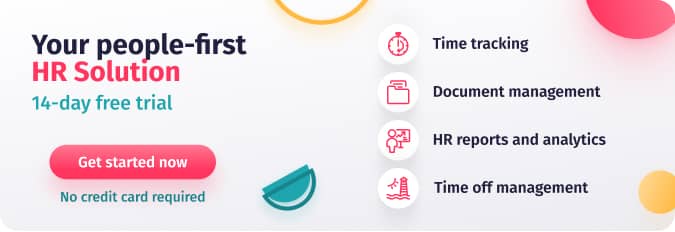Management by objectives (MBO) is a strategy that many employers use to boost performance levels and reach established goals. But what does management by objectives entail exactly? And what are the pros and cons of adopting a goal-centered MBO approach?
In this article, we’ll discuss key points of MBO and go over the step-by-step process of implementing management by objectives in your company. Additionally, we’ll take a look at performance management and goal-setting tools that can help your team stay on track.
Without further ado, let’s get started.
What is management by objectives (MBO)?
Management by objectives (MBO) is a concept that was popularized by Peter F. Drucker in his 1954 book, The Practice of Management. Essentially, it is a strategic model in which organizational leaders share objectives with all members of their staff. Then, employers and managers work together to determine individual goals and synchronize them with the needs of the company.
The underlying idea behind management by objectives is that people are driven by setting and attaining goals. By allowing managers and employees to play an active role in goal-setting, they take a more vested interest in business outcomes. As a result, they tend to put more effort and energy into the process and feel more accountable for the success or failure of their actions.
Advantages of management by objectives
Adopting a management by objectives approach has several benefits, including:
- Aligned objectives for employees and managers. Since both parties will have input in the overall objective, they will also have a clear understanding of their expectations.
- Increased organizational commitment and engagement levels. Under this approach, employees will feel that their participation is valuable and needed for the company’s success. Having this understanding will provide them with more purpose-driven motivation.
- Flatter leadership structures. Rather than just producing according to predetermined objectives, employees will feel empowered and encouraged to think strategically. That means improved coordination, cooperation, and widespread entrepreneurial spirit.
- Improved employee performance management- Management by objectives means that employees will be able to understand how their actions contribute to the organization’s overarching objectives. And having clearly defined goals leads to increased efficiency and fewer performance gaps.
Disadvantages of MBO
Conversely, management by objectives is not right for every organization. Here are some possible MBO limitations:
- An over-emphasis on strategic planning. Traditionally, managers have a more strategy-focused role while direct reports focus on carrying out tasks. In organizations that utilize MBO, everyone plays a part in strategic planning. Meaning that without clearly defined roles and responsibilities, some teams might struggle to maintain high productivity levels.
- Collective mindset and collective goals. Depending on the way that it is adopted, taking a management by objectives approach might inhibit employees from setting and working toward their own career goals. For organizations that are serious about implementing an MBO model long term, there needs to be a balance in which employees can receive assignments that are tailored to their specific skill sets and career growth paths.
- Tunnel vision. While goal-setting is a fundamental part of motivation, it is not the only contributing factor. It’s crucial to maintain balance and take into consideration other important factors, such as the operations and resources involved in achieving goals.
- Sacrifice of quality. Having a goal-centered approach might make employees prioritize checking all of the boxes to make sure that they complete their individual objectives. As a result, they might sacrifice quality for the sake of “getting things done.”
How to practice management by objectives: Step-by-step
Determine overarching goals
The company’s goals and targets should be at the core of a management by objectives strategy. Determining these objectives should also be a collaborative effort. It requires the input of executive leaders, management, and other senior positions to decide what goals are realistic, achievable, and connected to the company’s mission and vision.
Discuss objectives with employees
Once big-picture goals and timeframes have been put in place, it’s time to bring employees into the discussion. Ideally, managers should communicate with employees in a one-on-one meeting and clearly explain what needs to be achieved and in what timeframe. Then, together, employees and managers can map out personal objectives, resources required, and specific short and long-term goals.
Encourage employees to take part
Part of what makes a management by objectives tactic unique is that it encourages the direct involvement of employees in the process. While discussing objectives and creating measurable goals, it shouldn’t be a top-down discussion. Employees should be asked about what is feasible, what time frame works best, and whether or not this fits into their personal career goals. Additionally, employees should be aware of how their performance will be evaluated. They need to know the specific metrics and qualitative and quantitative data that will be taken into account.
Track individual progress
The next step is to find a way to monitor employee progress and performance. The way that goals are communicated and tracked varies from employer to employer. However, the easiest way to visualize and measure goals is with OKR and goal-tracking software. Not only will this increase transparency and efficiency, but it will also provide everyone with a clear understanding of their responsibilities, deadlines, and progress. When it comes to management by objectives, organization is key!
Perform regular performance appraisals
To make sure that everything is running smoothly, be sure to conduct regular monthly or quarterly performance appraisals. Note that there is a difference between performance reviews and competency assessments. Even if you are taking management by objectives approach, performance appraisals should be comprehensive and prioritize employee feedback. Here are some few tools and techniques to make sure that employee performance management practices are effective:
- 9-box grids– This tool helps to measure and compare employee performance with employee potential.
- Self-appraisals and feedback surveys- These will encourage employees to share their perspectives and individual concerns. Allowing you to address obstacles before they become bigger problems.
- Performance management software- This will make performance reviews more cohesive and streamline the understanding of employee performance. PMS software even helps to boost employee retention, as it provides individuals with an optimal experience.
Management by objectives tips
As previously discussed, there are pros and cons that come with implementing management by objectives. However, there are actions that you can take to make the process more successful. Here are some key pointers to keep in mind:
Prioritize workplace culture
A big part of having a successful MBO structure is having rock-solid values and a highly communicative company culture. Without the right workplace environment, employees could become overly focused on achieving objectives and forgo healthy work habits in the process. Before you know it, your team will be working through lunch and buckling under the stress of completing assignments on time.
This kind of objectives-first, values-second approach will only backfire, as employees will begin to feel unmotivated and neglected. What’s important here is that while creating a management by objectives model, you can foster psychological safety, openness, and trust in the process. If employees are having difficulty with time management and deadlines, they should feel comfortable sharing their concerns with their managers.
Make sure that goals are realistic
A huge contributing factor to successful MBO models is that they are based on achievable goals. Initially, this might require some push and pull to strike the right balance and ensure that your staff isn’t being overworked. Especially while making the transition to a management by objectives model, be sure to account for some extra wiggle room and flexibility with deadlines and metrics.
The key is to not have employees put in extra hours after work or on the weekend. It’s easy to be ambitious while setting those initial goals, but keep in mind they should be reasonable and within reach. Otherwise, you risk burnout, heightened turnover, and ultimately reduced productivity–exactly the opposite of what you had set out to achieve.
Find ways to strengthen internal communication
One of the biggest advantages of taking a management by objectives approach is being able to align your team to complete common goals. To benefit in this way, it’s crucial to make sure that your team is communicating fluidly and able to work together. While performance scores hinge on the completion of personal objectives, employees should understand that teamwork is also a responsibility and requirement. The team’s objectives influence individual objectives and vice versa.
Managing performance with Factorial
When it comes to implementing a management by objectives strategy, goals, OKRs, and employee performance go hand in hand. To manage effectively this while staying on top of operational processes, you will need a comprehensive solution that covers all of your bases.
With Factorial’s HR software, you can manage OKRs, and performance appraisals, all in one place. Specifically, with our HR tools, you can:
- Gather quantitative and qualitative feedback from your team during performance reviews and climate surveys.
- Create custom OKRs, individual goals, and company-wide goals and track their progress toward completion.
- Assign OKRs and KPIs to employees, and keep employees informed about variable payments.
- Generate custom reports based on performance appraisals and employee records.
- Automate and streamline key operational tasks like time off, absences, document management, and more.
But don’t just take our word for it, see for yourself. Give Factorial a try now.




